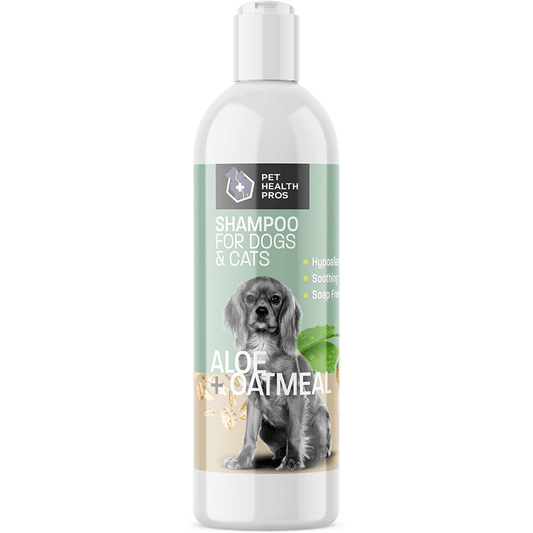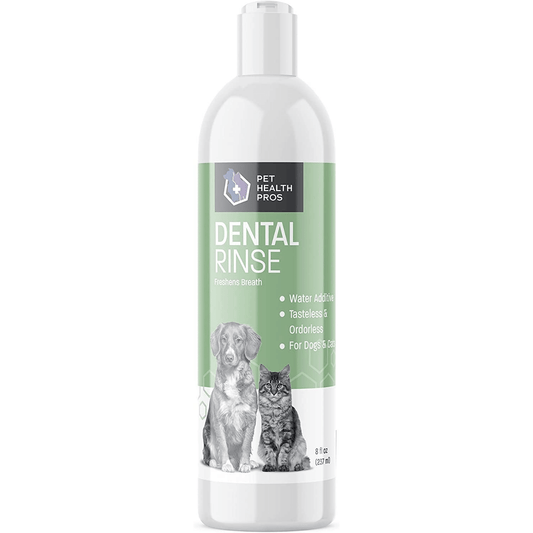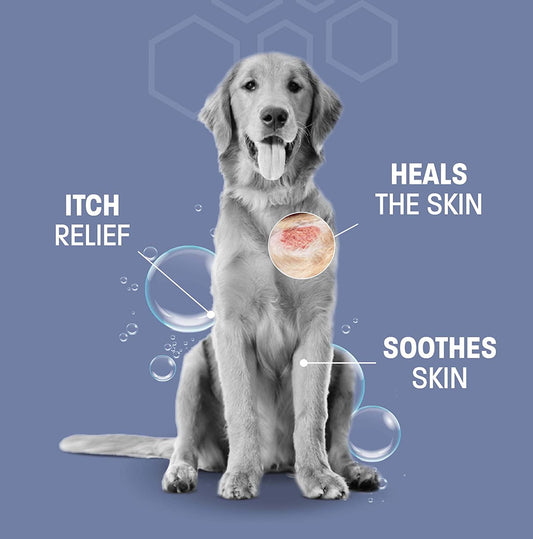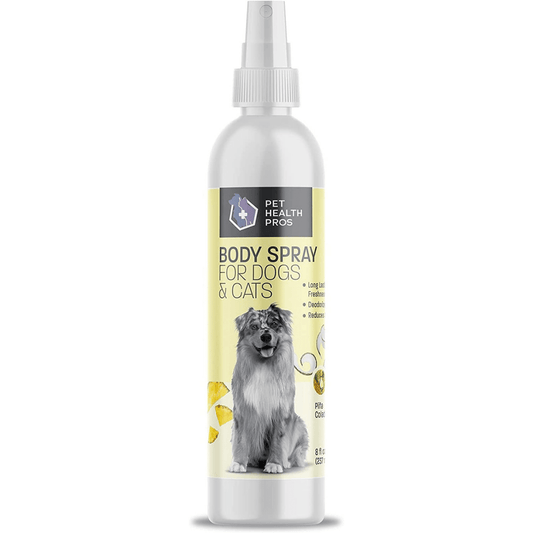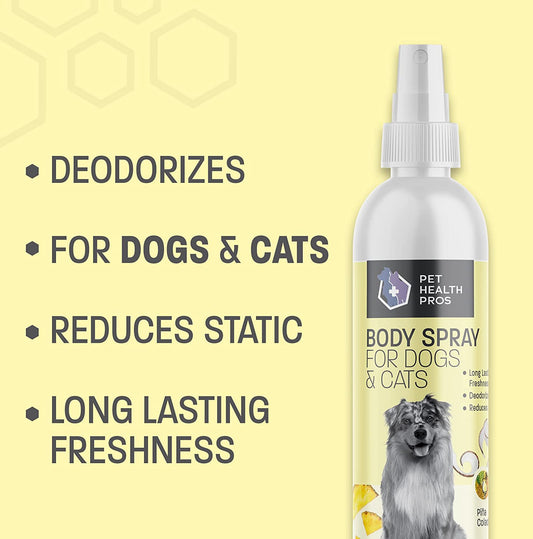Achieve a Bright and White Coat with Dog Shampoo for Whitening
Having a bright and white coat is not only aesthetically pleasing but also indicates good health and grooming. In this article, we will explore the importance of a bright and white coat for dogs, factors that affect coat color, and the benefits of maintaining a pristine coat. We will also provide valuable insights on choosing the right dog shampoo for whitening, proper techniques for using whitening shampoo, and considerations for your dog's skin sensitivity. Read on to discover how you can achieve a bright and white coat for your beloved furry friend.
Key Takeaways
- A bright and white coat is a sign of good health and grooming for dogs.
- Coat color can be influenced by factors such as genetics, diet, and environment.
- Using a whitening shampoo with appropriate ingredients can help enhance coat color.
- Avoid shampoos with harmful ingredients that can cause skin irritation or dryness.
- Consider your dog's skin sensitivity and choose a whitening shampoo accordingly.
Understanding the Importance of a Bright and White Coat
Why a Bright and White Coat Matters
Having a bright and white coat is not just about aesthetics, it is also a sign of good health and proper grooming. A clean and well-maintained coat indicates that your dog is well taken care of and free from any skin issues or infections. It is important to regularly groom your dog and keep their fur clean to prevent matting, tangling, and odor. Regular cleaning also helps to remove dirt, debris, and allergens that can accumulate in your dog's fur and cause discomfort or skin irritations.
Factors that Affect Coat Color
The color of a dog's coat can be influenced by various factors, including genetics, environment, and hygiene. Good hygiene practices are essential for maintaining a bright and white coat. Regular bathing with a whitening shampoo can help remove dirt, stains, and discoloration, resulting in a cleaner and more vibrant coat. Additionally, proper grooming, such as brushing and regular trimming, can prevent matting and tangling, which can affect the overall appearance of the coat.
Choosing the Right Dog Shampoo for Whitening
Identifying Your Dog's Coat Type
Identifying your dog's coat type is an important step in choosing the right dog shampoo for whitening. Coat type refers to the texture and length of your dog's fur. There are several different coat types, including short, medium, and long. Each coat type requires different care and maintenance to keep it looking its best.
To identify your dog's coat type, start by examining the texture of their fur. Short-haired dogs have fur that is close to the body and doesn't require much grooming. Medium-haired dogs have fur that is longer and may require regular brushing to prevent matting. Long-haired dogs have fur that is thick and may require daily brushing to keep it tangle-free.
Once you have identified your dog's coat type, you can choose a whitening shampoo that is specifically formulated for that type of coat. This will ensure that you are using a shampoo that is effective and safe for your dog's fur.
Ingredients to Look for in Whitening Shampoos
When choosing a whitening shampoo for your dog, it is important to consider the ingredients. Look for shampoos that contain natural brightening agents such as lemon extract or chamomile. These ingredients can help to gently lighten your dog's coat and enhance its natural brightness. Additionally, vitamin E is a beneficial ingredient that can nourish and moisturize the skin, promoting a healthy coat. Avoid shampoos that contain harsh chemicals or artificial dyes, as these can be irritating to your dog's skin and may cause dryness or allergies.
Avoiding Harmful Ingredients
When choosing a dog shampoo for whitening, it is important to be aware of the ingredients used in the product. Some ingredients may be harmful to your dog's skin and coat, causing irritation or allergic reactions. One common concern is canine allergies, which can be triggered by certain ingredients found in shampoos. To ensure the safety of your dog, avoid shampoos that contain ingredients known to cause allergic reactions in canines. It is recommended to check the label for any potential allergens and consult with your veterinarian if you have any concerns.
Considering Your Dog's Skin Sensitivity
When choosing a dog shampoo for whitening, it is important to consider your dog's skin sensitivity. Dog allergy triggers can cause discomfort and irritation to your dog's skin, which can lead to a dull and unhealthy coat. To avoid any adverse reactions, look for whitening shampoos that are specifically formulated for sensitive skin. These shampoos are usually free from harsh chemicals and fragrances that can trigger allergies. Additionally, it is recommended to perform a patch test on a small area of your dog's skin before using the shampoo all over. This will help you determine if your dog has any adverse reactions to the product.
Proper Techniques for Using Whitening Shampoo
Preparing Your Dog for Bath Time
Before bathing your dog, it's important to take a few steps to ensure a smooth and stress-free experience for both you and your furry friend. Managing your pet's stress is crucial to maintaining a positive bathing routine. Here are some tips to help you prepare your dog for bath time:
- Create a calm environment: Find a quiet and comfortable space where your dog can relax before the bath. This will help reduce anxiety and make the process more enjoyable.
- Brush your dog's coat: Gently brush your dog's coat to remove any tangles or mats. This will not only make the bath easier but also prevent further tangling during the process.
- Trim your dog's nails: If your dog's nails are long, consider trimming them before the bath. Long nails can cause discomfort and may scratch you or your dog during the bath.
- Gather all necessary supplies: Make sure you have everything you need within reach, including the whitening shampoo, towels, and a non-slip mat for the bathing area.
By following these steps, you can create a calm and comfortable environment for your dog, making bath time a positive experience for both of you.
Applying the Whitening Shampoo
After properly preparing your dog for bath time, it's time to apply the whitening shampoo. Gently massage the shampoo into your dog's coat, making sure to cover all areas. This will help to remove dirt and stains and brighten the coat. Be sure to avoid getting shampoo in your dog's eyes and rinse thoroughly after application. For dogs with sensitive skin, it's important to choose a whitening shampoo that is gentle and hypoallergenic to prevent any irritation. Remember to follow the instructions on the shampoo bottle for the best results.
Rinsing and Drying Techniques
After applying the whitening shampoo and thoroughly massaging it into your dog's coat, it's time to rinse off the shampoo. Rinsing is an important step to ensure that all the shampoo is removed from your dog's fur. Use lukewarm water and make sure to rinse thoroughly, paying extra attention to areas that are prone to trapping shampoo, such as the armpits and under the tail. Gently run your fingers through your dog's fur to help remove any remaining shampoo.
Once the shampoo is completely rinsed off, it's time to dry your dog. Drying is an essential step to prevent your dog from getting cold and to avoid any skin irritation. Use a clean towel to gently pat your dog's fur, removing excess water. Avoid rubbing vigorously as this can cause tangles and matting. If your dog has a long coat, you may also use a blow dryer on the lowest heat setting, keeping it at a safe distance from your dog's skin.
Remember, the frequency of using whitening shampoo will depend on your dog's specific needs and the instructions provided by the shampoo manufacturer.
Frequency of Use
The frequency of using a whitening shampoo for your dog's coat depends on several factors. It is important to consider your pet's health and the specific needs of their coat. Pet health pros recommend using a whitening shampoo once every two to four weeks to maintain a bright and white coat. However, if your dog spends a lot of time outdoors or gets dirty frequently, you may need to use the shampoo more often. It is important to follow the instructions on the shampoo bottle and consult with your veterinarian if you have any concerns.
Conclusion: Proper Techniques for Using Whitening Shampoo
In conclusion, achieving a bright and white coat for your dog is not only aesthetically pleasing, but it also reflects good health and proper grooming. By understanding the importance of a bright and white coat, considering the right dog shampoo for whitening, and using proper techniques, you can help your dog maintain a beautiful coat. Remember to identify your dog's coat type, look for whitening shampoos with the right ingredients, avoid harmful ingredients, and consider your dog's skin sensitivity. With proper preparation, application, rinsing, and drying techniques, you can achieve the desired results. Regular use of whitening shampoo will help maintain the brightness and whiteness of your dog's coat. Take care of your furry friend and enjoy the benefits of a bright and white coat!
Frequently Asked Questions
1. Can I use whitening shampoo on any dog breed?
Yes, whitening shampoos can be used on any dog breed. However, it is important to consider your dog's specific needs and consult with a veterinarian if you have any concerns.
2. How often should I use whitening shampoo on my dog?
The frequency of using whitening shampoo depends on your dog's individual needs and the instructions provided by the shampoo manufacturer. It is generally recommended to follow the instructions on the shampoo bottle or consult with a professional groomer or veterinarian.
3. Can whitening shampoo cause skin irritation?
While whitening shampoos are generally safe to use, some dogs may be more sensitive to certain ingredients. It is important to choose a whitening shampoo that is specifically formulated for dogs and avoid any known allergens. If your dog experiences any skin irritation or allergic reactions, discontinue use and consult with a veterinarian.
4. Can I use human whitening shampoo on my dog?
No, it is not recommended to use human whitening shampoo on dogs. Human shampoos are formulated for the pH level of human skin, which is different from that of dogs. Using human shampoo on dogs can disrupt the natural balance of their skin and cause irritation or other adverse reactions.
5. Will whitening shampoo remove stains from my dog's coat?
Whitening shampoos are specifically formulated to help remove stains and brighten the coat. However, the effectiveness may vary depending on the type and severity of the stains. Regular and proper use of whitening shampoo can help maintain a bright and white coat.
6. Can I use whitening shampoo on puppies?
It is generally safe to use whitening shampoo on puppies, but it is important to choose a mild and gentle formula specifically designed for their delicate skin. Consult with a veterinarian for recommendations on the appropriate whitening shampoo for puppies.


